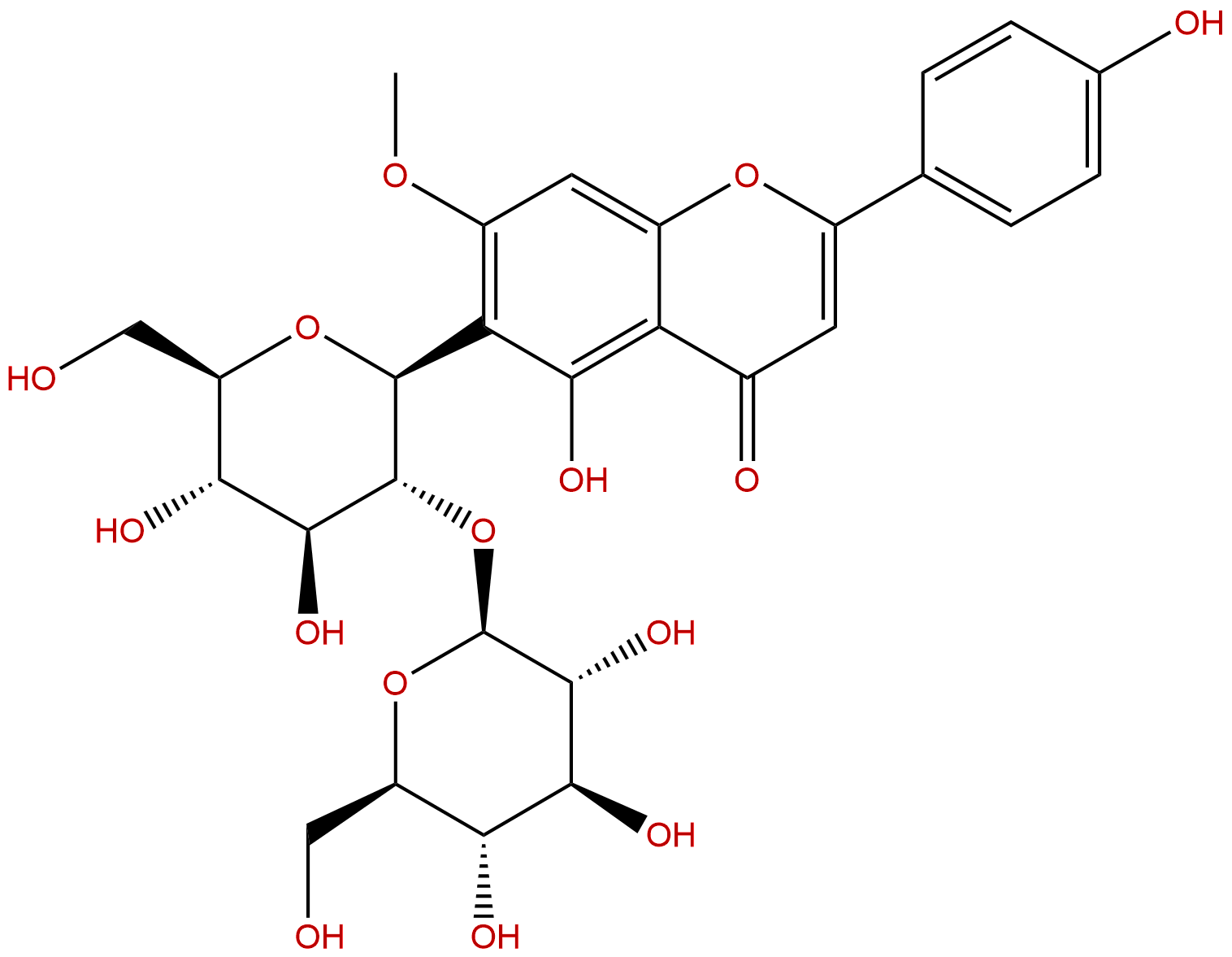
SpinosinCAS No.:72063-39-9
|
||||||||||
 |
|
|
||||||||

| Catalogue No.: | BP1336 |
| Formula: | C28H32O15 |
| Mol Weight: | 608.549 |
Product name: Spinosin
Synonym name: Flavoayamenin
Catalogue No.: BP1336
Cas No.: 72063-39-9
Formula: C28H32O15
Mol Weight: 608.549
Botanical Source: Ziziphispinosae semen
Physical Description:
Type of Compound: Flavonoids
Purity: 95%~99%
Analysis Method: HPLC-DAD or/and HPLC-ELSD
Identification Method: Mass, NMR
Packing: Brown vial or HDPE plastic bottle
The product could be supplied from milligrams to grams
Inquire for bulk scale.
Description:
Spinosin has neuroprotective, anxiolytic-like and anti-inflammatory effects, it ameliorated memory impairment induced through AβO, the serotonergic neurotransmitter system, it also potentiated pentobarbital-induced sleep via the serotonergic system.
References:
Biomol Ther (Seoul). 2015 Mar;23(2):156-64.
Spinosin, a C-Glucosylflavone, from Zizyphus jujuba var. spinosa Ameliorates Aβ1-42 Oligomer-Induced Memory Impairment in Mice.
Alzheimer's disease (AD) is a neurodegenerative disorder associated with progressive memory loss and neuronal cell death. Although numerous previous studies have been focused on disease progression or reverse pathological symptoms, therapeutic strategies for AD are limited. Alternatively, the identification of traditional herbal medicines or their active compounds has received much attention. The aims of the present study were to characterize the ameliorating effects of Spinosin, a C-glucosylflavone isolated from Zizyphus jujuba var. spinosa, on memory impairment or the pathological changes induced through amyloid-β1-42 oligomer (AβO) in mice.
METHODS AND RESULTS:
Memory impairment was induced by intracerebroventricular injection of AβO (50 μM) and Spinosin (5, 10, and 20 mg/kg) was administered for 7 days. In the behavioral tasks, the subchronic administration of Spinosin (20 mg/kg, p.o.) significantly ameliorated AβO-induced cognitive impairment in the passive avoidance task or the Y-maze task. To identify the effects of Spinosin on the pathological changes induced through AβO, immunohistochemistry and Western blot analyses were performed. Spinosin treatment also reduced the number of activated microglia and astrocytes observed after AβO injection. In addition, Spinosin rescued the AβO-induced decrease in choline acetyltransferase expression levels.
CONCLUSIONS:
These results suggest that Spinosin ameliorated memory impairment induced through AβO, and these effects were regulated, in part, through neuroprotective activity via the anti-inflammatory effects of Spinosin. Therefore, Spinosin might be a useful agent against the amyloid b protein-induced cognitive dysfunction observed in AD patients.
Pharmacol Biochem Behav. 2014 May;120:88-94.
Ameliorating effect of spinosin, a C-glycoside flavonoid, on scopolamine-induced memory impairment in mice.
Spinosin is a C-glycoside flavonoid isolated from the seeds of Zizyphus jujuba var. spinosa.
METHODS AND RESULTS:
This study investigated the effect of Spinosin on cholinergic blockade-induced memory impairment in mice. Behavioral tests were conducted using the passive avoidance, Y-maze, and Morris water maze tasks to evaluate the memory-ameliorating effect of Spinosin. Spinosin (10 or 20mg/kg, p.o.) significantly ameliorated scopolamine-induced cognitive impairment in these behavioral tasks with a prolonged latency time in the passive avoidance task, an increased percentage of spontaneous alternation in the Y-maze task and a lengthened swimming time in target quadrant in the Morris water maze task. In addition, a single administration of Spinosin in normal naïve mice also enhanced the latency time in the passive avoidance task. To identify the mechanism of the memory-ameliorating effect of Spinosin, receptor antagonism analysis and Western blotting were performed. The ameliorating effect of Spinosin on scopolamine-induced memory impairment was significantly antagonized by a sub-effective dose (0.5mg/kg, i.p.) of 8-hydroxy-2-(di-N-propylamino)tetralin, a 5-HT1A receptor agonist. In addition, Spinosin significantly increased the expression levels of phosphorylated extracellular signal-regulated kinases and cAMP response element-binding proteins in the hippocampus.
CONCLUSIONS:
Taken together, these results indicate that the memory-ameliorating effect of Spinosin may be, in part, due to the serotonergic neurotransmitter system, and that Spinosin may be useful for the treatment of cognitive dysfunction in diseases such as Alzheimer's disease.
HPLC of Spinosin

HNMR of Spinosin
